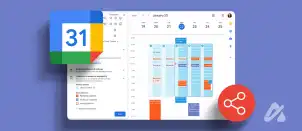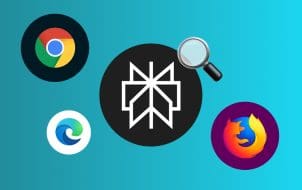Device Links
Anyone who’s been online has probably come across a pop-up that reads, “This site uses cookies.” You are always given the option to either accept all cookies or reject all cookies. While accepting cookies can help create a more user-friendly browsing experience, there’s a way to eliminate the need to always signify you accept cookies. The article below will show you how to enable cookies on different devices, software, and browsers.
How to Enable Cookies on Google Chrome on a Computer
- Access Chrome on your computer.

- Go to the top right-hand corner of the screen and select “More” and then “Settings.”

- Select the privacy and security option and choose “Site settings.”

- Select the option for cookies and site date.

- Select which cookies you want to enable from the three different options:

- Option 1 – “Allow all cookies.” This option will allow all cookies and track your browsing on all other sites.
- Option 2 – “Block third-party cookies.” This will enable cookies on websites, while also protecting you from being tracked. It might restrict some features for you on certain websites, but it ensures more privacy.
- Option 3 – “Block third-party cookies in Incognito” This third option allows you to enable all cookies, excluding an Incognito window.
- If you’d like to adjust your cookies for specific websites, head to the “See all site data and permissions” option. This option allows you to choose which cookie settings to use for which website. Whether you’d like to always allow cookies on a certain site, never allow cookies on a certain site, or delete cookies when you close specific sites, you can simply add the selected websites to the options
above.
Enabling Cookies via Microsoft Edge on a Computer
- Access the Microsoft Edge application. If you have a Mac, you’ll find it under your applications folder. If you have a PC, the blue and green icons will be in the start menu on Windows.

- Select the menu that has three dots as an icon (On the top right-hand side of your screen).

- Scroll down and select the “Settings” option.

- On the left side, choose the option for “Cookies and site permissions.”

- On the top right side, select the option to manage and delete site data and cookies.

- Select the switch to allow sites to read and save cookie data. Make sure that the switch is blue. If the switch is gray, this means that the option is still disabled.

- You’ll also be able to choose if you’d like to allow third-party cookies or not.

How to Enable Cookies in Safari on a Mac
Cookies are approved automatically on Safari. However, you’ll need to turn them on again if you’ve chosen to deactivate them in the past.
- Go to Safari on your Mac and access the menu on the top, left-hand side of your window.
- Select the option “Preferences.”
- Choose the privacy option (it resembles a hand icon).
- From here, you’ll be able to deselect the option to “Block all cookies.” If this option was deselected, it means that the Safari browser wasn’t blocking your cookies.
- For extra protection and more privacy when browsing, you can select the option “Prevent cross-site tracking.”
Enabling Cookies on an iPhone via Safari
- Go to Settings on your iPhone.
- Search for Safari once you’re in the Settings menu and tap that option.
- Find the option to block all cookies. If this option is green, then your cookies are blocked. To allow all cookies, you’ll need to deselect this option.
How to Enable Cookies via Firefox on a Computer
- Access the Firefox app. On a Mac, it can be found in your Applications folder. For Windows users, you’ll find Firefox in the Start menu. If you don’t see the app, you may have to download it from the Apple Store or Google Play.

- Go to the Firefox Settings. For Mac users, click the Firefox option on the top of your screen and select Preferences. For Windows users, click the icon with three horizontal lines and choose “Settings.”

- On the left side of the screen, select the option for “Privacy and Security.”

- Here, you’ll be allowed to choose from three distinct cookie processes:

- Standard: The standard is the best choice for most of the users. It allows all cookies, excluding the ones that trace you on other websites.
- Strict: This preference resembles the standard option; however, it restricts all third-party cookies. This option might make it slightly more difficult to log in to other websites as it can restrict certain features.
- Custom: This preference is perfect for users who are knowledgeable about the different forms of tracking cookies. It enables you to select specifically which cookies you want to allow and block.
Enabling Cookies Through Firefox on Android, iPhone or iPad
- Access the Firefox app on your chosen device.

- On iPhone, tap the three horizontal lines at the bottom-right of the screen. If you’re using Android, select the three dots on the top-right side of your screen.

- Select the “Settings” option under the menu.

- Head to the Privacy section of the menu and select either “Enhanced Tracking Protection” or “Tracking Protection.”

Why Cookies Are Helpful
Websites use cookies to collect data about each individual who visits their site. The information that companies collect about you through cookies is the name of the websites you visit, your account user name, website preferences, the number of links you clicked and which ones they are, the number of times you visit a site, and for how long, the items that you added to cart, and your personal information that you entered.
Although all the above data is collected through cookies, it can still be beneficial to your web searching:
- Provides full website access. If you don’t accept cookies on websites, you’ll have restricted access to the site. By accepting cookies, you are always granted full access to explore and scroll on websites as you wish.
- Enhanced user experience. When cookies are enabled, it allows a website to remember your preferences the next time you visit. The information that gets collected can be used to increase your user experience by tailoring shopping experiences and browsing history according to your individual needs. It also grants you access to more locally appropriate and important content. This offers you a more engaged, convenient, and fruitful experience.
- Easier log-ins. Since cookies remember your login information, it makes it convenient to access the sites you’re constantly visiting, or if you tend to forget your login information quite frequently.
One Smart Cookie
From the above, it’s easy to deduce that enabling cookies comes with many different advantages that offer you a more user-friendly experience. There are also different options to enable cookies for different kinds of users, depending on each person’s personal preferences and need for extra privacy.
Have you ever enabled or disabled cookies on a site? If so, what was your experience and which option do you prefer selecting? Comment below.
Disclaimer: Some pages on this site may include an affiliate link. This does not effect our editorial in any way.

























